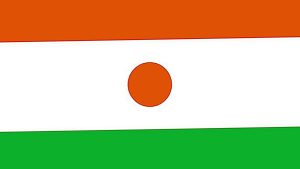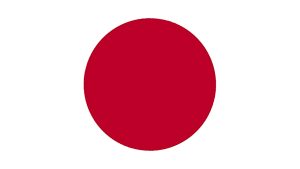Oldest Countries In Asia: Four main regions make up the continent of Asia. These areas include the Middle East, Southeast Asia, East Asia, and the Indian Subcontinent. For thousands of years, civilizations have existed on the continent. While this continent on which countries are located has been around for millions of years, populations have moved and empires and nations have come and gone. Surprisingly, not many nations have endured for tens of thousands of years, and it is challenging to pinpoint a nation’s specific founding date.
Obviously, this ambiguity makes it difficult to agree on the oldest countries in Asia. There are some things, though, that are essentially unarguable. Regardless of your perspective, certain civilizations are very, very old. Although they may not have been one country for the entirety of their history, they are similar to modern nations in terms of their geography and culture. This article looks at the oldest countries in Asia.
Recommended: Countries with highest unemployment rate in the world
Top 5 Oldest Asian Countries
1. India (2500 BCE): It is believed that humans have been living in India, one of the cradles of civilisation, for more than 2 million years. The Indus Valley Civilization began circa 3300 BCE, with the first settlements dating to around 7000 BCE.
According to urban planning, drainage, and water supply, the Indus Valley Civilization constructed brick homes. Non-residential structures devoted to specific trades and skills, like metallurgy, existed. By 3000 BCE, there was a spice trade in India, according to artefacts and written inventories. There was a completely evolved way of life by 2500 BCE. By the turn of the millennium, drought had caused the dense population centres to spread.

In 1500 BCE, the Vedic Period began, during which the Hindu Vedas were written down. India is where Hinduism, a 4000-year-old religion, first emerged. It has 900 million followers now, with 95% of its members residing in India. It is the oldest religion that has been practised continuously on Earth.
The caste system was also established thanks to the Vedas. From there, India exchanged goods with various empires, which helped to enrich the local culture with their literature and religious values. As early as the seventh century, Islam had contact with several regions of the Indian subcontinent. Between 1221 and 1327, the Muslim Delhi Sultanate successfully repelled Mongol invasions. The British had already formed the East India Company by the 1750s. The Indian Rebellion of 1857 caused the corporation to fail, and the British lost control of it in 1947.
Also see: Hardest sports in the world
2. China (2697 BCE): China is said to be the longest continuously existing civilization in the world, with a recorded history spanning more than 4,000 years. Asia’s largest nation, China runs from the eastern coast to the western borders of Afghanistan, Tajikistan, Kyrgyzstan, and Kazakhstan.

The Yellow Emperor Huang-ti, who reigned between 2697 and 2597 BCE, is thought to have created the first foundations of Chinese civilisation. This era saw the beginning of a system of administration that would be imitated for generations. It was under his rule that silk, law, medicine, music, and agriculture were all advanced.
His descendants were known as the Five Emperors. The great Yellow River flood occurred, and power was given to Yu after he dedicated himself to stopping the deluge. After the last of the legendary Five Emperors granted him the throne sometime after 2070 BCE, Yu the Great assumed control. Since the first confirmed accounts of this dynasty date from around 1300 BCE, this history is debatable. The Xia Dynasty came into being after Yu the Great through lineal descent. The Xia Dynasty may be the oldest dynastic civilisation on earth, though this is debatable.
China currently has 1.4 billion citizens, more than any other nation. It has been in power since the middle of the twentieth century and goes by the name the People’s Republic of China. The Chinese monarchy was overthrown in 1912, and the present communist administration took office after the country’s most recent civil war.
Recommended: Countries with the most faithful wives in the world
3. Vietnam (2879 BCE): The Vietnam region has been home to hominid cultures since 20,000 years ago. Before that, there had been 500,000 years of human ancestry in the region. In 2879 BCE, the Hong Bang dynasty—the earliest structured dynasty—was founded. No concrete proof of this governing body’s existence has been found, raising the possibility that it is fiction. A lunar calendar with stone tools may have been used by the Vietnamese civilisation around 2100 BCE, according to research.

The Dong Son Culture, which flourished approximately 1000 BCE, is one well-known civilization whose contributions to modern Vietnamese identity are significant. This community engaged in advanced bronzeworking, politics, and social systems that were established. It was created in response to the region’s need for an organizing body for tribal trade. Dikes and canals were used for rice irrigation by 500 BCE. Vietnam’s approach to trade and agriculture was changed by this. A lot of denser population centres were also made possible.
The most recent constitution of Vietnam, which became a one-party socialist republic on November 28, 2013, is in effect today. This is an authoritarian administration that imposes restrictions on its populace by outlawing the freedoms of assembly, the press, and religion. The Communist Party of Vietnam is currently in charge of it.
Recommended: How To Become a Successful Entrepreneur
4. Iran (7000 BCE): Iranian culture’s influence stretches well beyond the country’s current borders. The present-day nations of Armenia, Georgia, and Azerbaijan were among its historic territories. Despite years of expansion and contraction, as well as periods of external administration, Iran has always re-established its independence while retaining its identity. Iranian history dates back to 7000 BCE when the country’s first real towns are thought to have existed. Since then, the region has been continuously populated.

Evidence of highly developed human agricultural societies in the region dates back more than 10,000 years. Iran has a sizable Neanderthal population as well. Up until the middle of the twentieth century, Iran was known as Persia. When Muslims conquered Persia around 650 CE, Islamic influence began, and this new religious authority persisted for a few hundred years.
The Mongols conquered Iran around 1219 CE, although their rule only lasted for about a century. By 1295 CE, Islamic control had returned. The Black Death killed about 30% of Iranians in the middle of the thirteenth century. As the unrest persisted, the area underwent several changes in both ownership and faith. The Iranian Revolution, which ousted the monarchy in power at the time and founded the Islamic Republic in 1979, put a stop to this centuries-long cycle of foreign rulers. Theocracy and democracy coexist under the current system of government.
Both domestically and globally, the political environment is heated today. Iran’s nuclear capabilities are a major topic of debate on a global scale. In this country, the rights of the people are paramount.
Also see: How to become a successful lawyer
5. Japan (660 BCE): The first emperor Jimmu is credited with founding Japan as a nation around 660 BCE, according to mythology. There are Chinese texts that suggest Japan’s existence around the year 300 AD, yet this time frame hasn’t been confirmed. In the period from 794 to 1185 AD, Japan started to acquire the cultural traits that we now refer to as “Japanese”. If we believe historical sources, Buddhism had a significant impact on Japanese culture.

Japan, widely known as the Land of the Rising Sun, has seen countless civilizations rise and fall. Only after the Meiji Restoration did Japan begin to gain international acclaim. Not only is Japan one of Asia’s oldest countries, but it is also one of the world’s oldest.
Recommended: Countries with the best education system in Africa
Conclusion
Identifying a country’s actual age is very challenging. However, the fascinating histories of Asian nations and empires have left us with a treasure mine of antiquities that still amaze and inspire people today, and we are extraordinarily fortunate for that.

Edeh Samuel Chukwuemeka, ACMC, is a lawyer and a certified mediator/conciliator in Nigeria. He is also a developer with knowledge in various programming languages. Samuel is determined to leverage his skills in technology, SEO, and legal practice to revolutionize the legal profession worldwide by creating web and mobile applications that simplify legal research. Sam is also passionate about educating and providing valuable information to people.